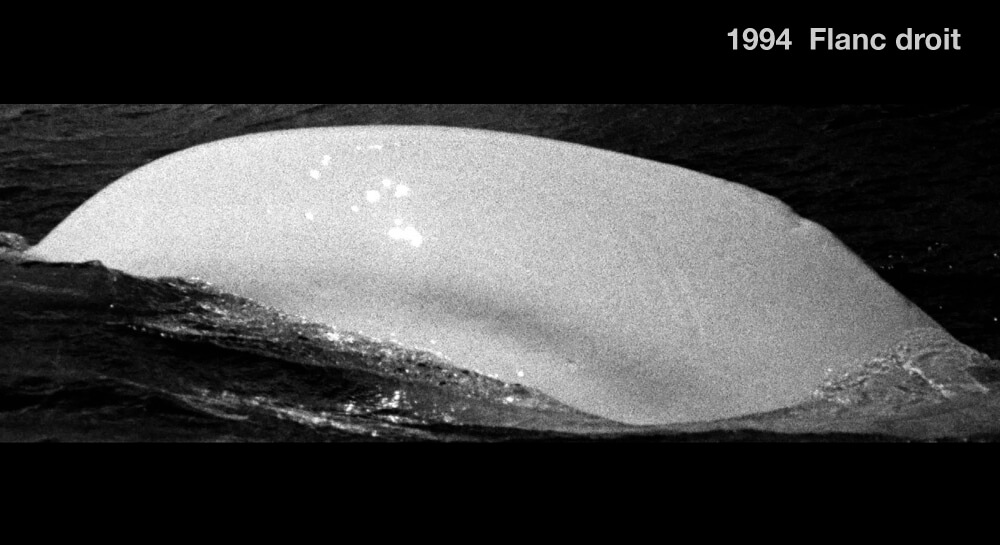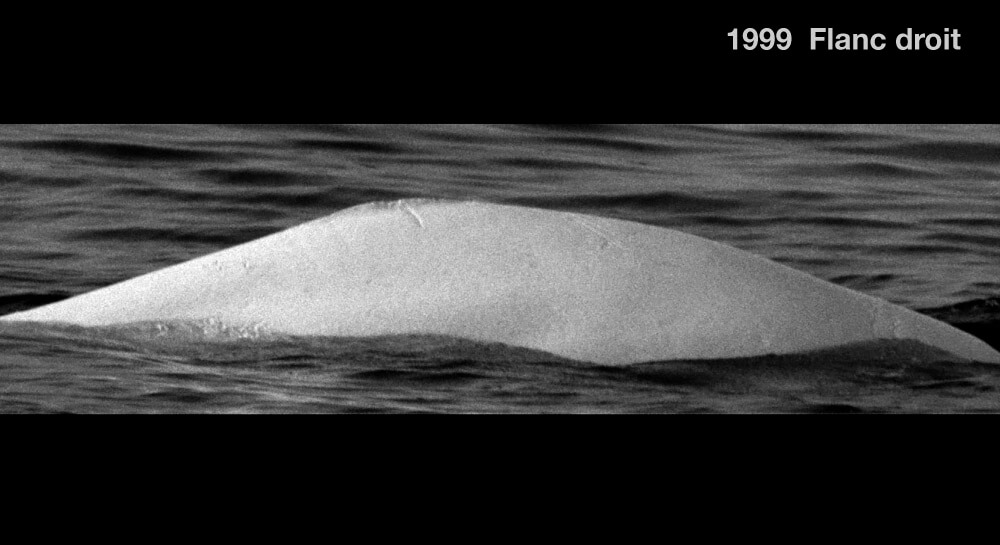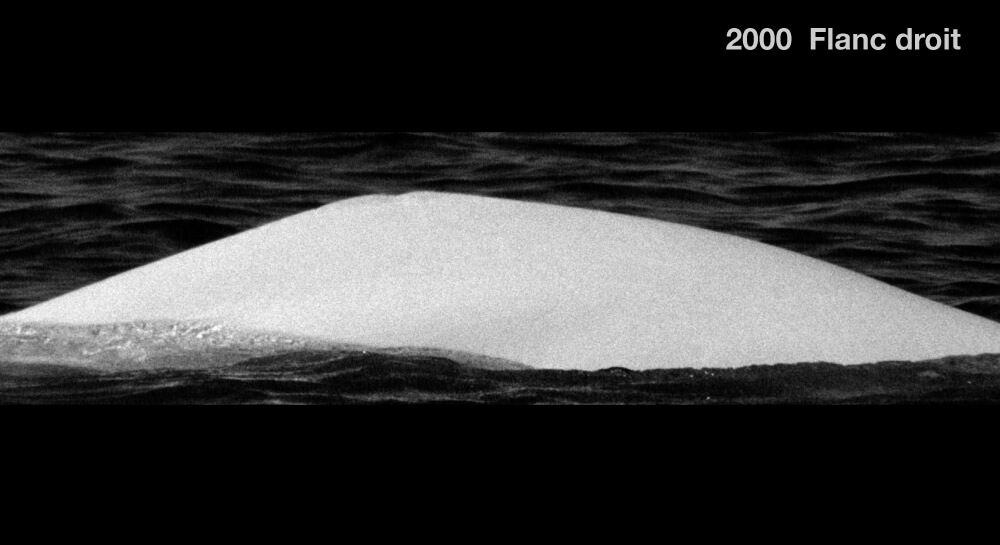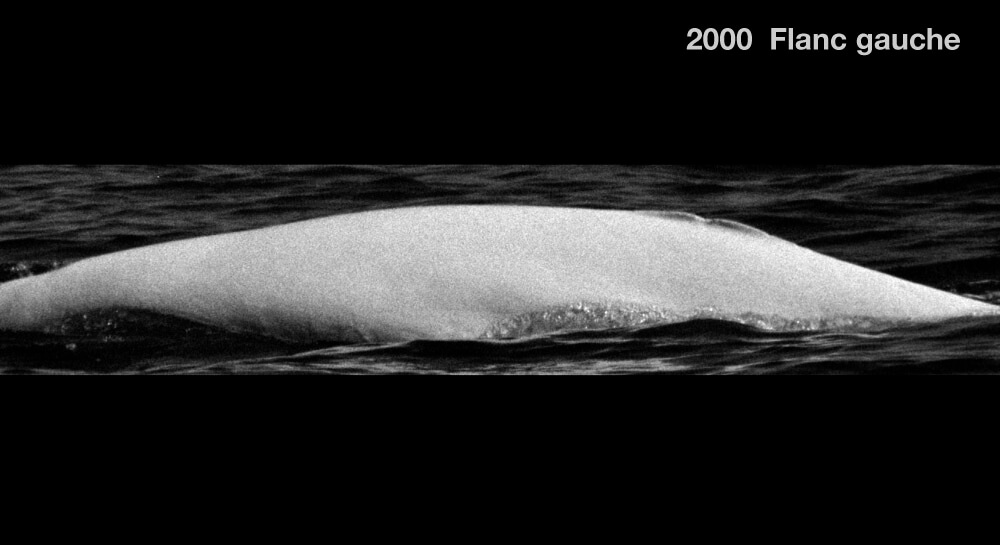Corsaire
Beluga

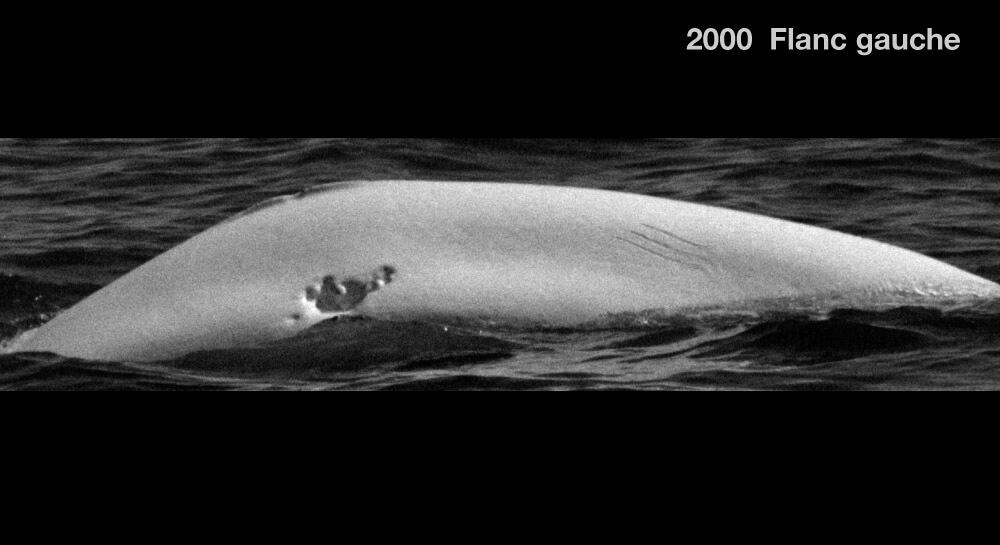
Adopted by GEO Magazine Readers
-
ID number
DL0109
-
Sex
Female
-
Year of birth
Before 1974
-
Known Since
1986
Distinctive traits
The notch in the center of her dorsal crest is a good way to recognize her, but what distinguishes Corsaire from the others is the large, irregular, deep scar on her left flank.
Life history
When we first met her in 1986, Corsaire was already all white. She was therefore born before 1974.
Her small size, habits and social affiliations clearly indicate that Corsaire is a female. In the early 1990s, a biopsy taken from her back confirmed this. Corsaire is regularly observed at the mouth of the Saguenay and near Île Verte. She is a member of the south shore female community.
Corsaire has been missing for 10 years. Then, in 2011, she reappeared and is particularly frequenting the area from the mouth of the Saguenay to Les Escoumins and the south shore, although in the first encounters she was seen more in the Kamouraska area.
Regularly seen with...
Observations history in the Estuary
Years in which the animal was not observed Years in which the animal was observed
Latest news
Early in the morning, we set out to patrol the ile Verte area, near the south shore of the St. Lawrence. Arriving off the island, we came across a herd of a dozen belugas, made up of adults and calves. We also noticed a newborn calf, flanked by a dirty-white female, still young. The animals could be feeding, as their movements are uncoordinated, going in all directions. Not far from the herd, we also see a minke whale and a few seals : there’s food around!
As we approach a beluga whale to take a biopsy, we realize it’s missing a piece of its tail! Surprised, we missed the biopsy : the dart landed almost a metre away. Back in the lab, when we analyzed the photos, we realized that the beluga whale whose tail was missing was Corsaire, a female known since 1986! We hadn’t seen her since 2014. What happened to her tail? We’ll probably never know (but we like the idea of a hungry mermaid)
The boat heads for Île aux Pommes, off Trois-Pistoles. We observe Corsaire in a herd of some forty individuals. At the head of the herd, Corsaire swims in the company of some twenty females, who are soon joined by a group of about twenty males. The belugas move in all directions. After observing and noting the details of the scene, we move away from the group.
Sponsor
GEO Magazine Readers adopted Corsaire (1994).


